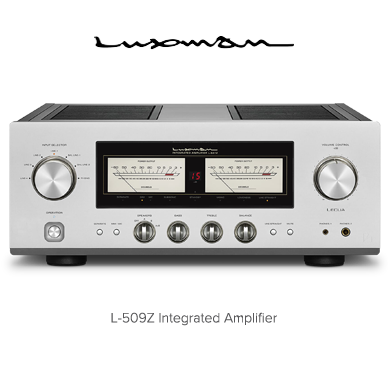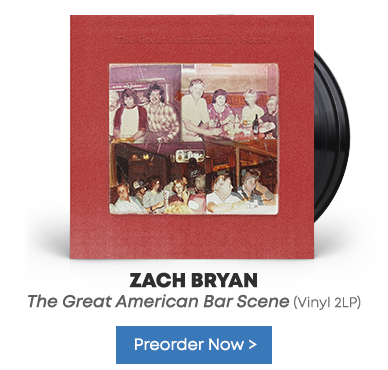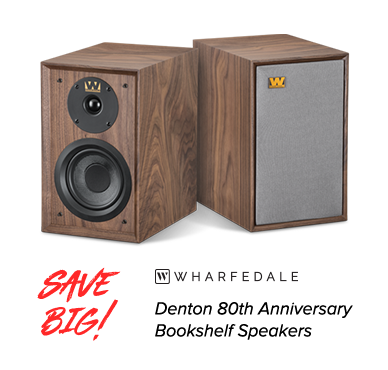In the arenas of power management and sound quality, one brand stands out among the mighty: AudioQuest. From its humble beginnings in 1980, when founder Bill Low investigated the positive effect cables could have on audio and video components, AudioQuest has been widely hailed by audiophiles for the immediate impact its products make on components. In recent years, AudioQuest sought to conquer questions surrounding power management. Answers came in the form of the award-winning Niagara Series of power management components, created by Garth Powell. Since joining AudioQuest in 2013, Powell has overseen an expanded lineup – including the all-new Wind and Storm Series power cables, the wildly imaginative Mythical Creatures line of speaker cables, and the PowerQuest Series, AudioQuest's newest developments in power conditioning options. We sat down with Mr. Powell after his recent visit to Chicago (where he spoke at AXPONA) to riff on the new products, their technology, and much more.
Bes Nievera (BN): Garth, what is the inspiration behind the new cable series?
Garth Powell, AudioQuest (GP): Whether dealing with power cords or speaker cables, many considerations are unique to the application, while there are some that are common. As it happens, the ones that are common have been underserved by traditional and audiophile-grade cable technologies. Transient current delivery with as little compression as possible was one goal, the second was to vastly expand the range and linearity (consistency) of the noise dissipation. The former has been understood by many, but the approach has always been to lower the DC resistance to the greatest extent possible (thus the girth and eight of premium speaker and power cables by AudioQuest and many other audiophile-grade cable manufacturers).
The problem is that you could make the cables the diameter of a fire hose with virtually no ability to bend it, and it would still compress transient current. This is because the cable also has a characteristic impedance, and this works against the unencumbered delivery of fast transients. Since the source and load impedance are not matched, and since a transmission line (even if one chose to create the circuit to build that out), would drop power in half, the industry has accepted and ignored this vexing problem. Unfortunately, it causes great non-linearity for both transient current delivery and noise-dissipation. Since we cannot make all impedances match, we simply got rid of the characteristic impedance entirely.
The latter concern is maximizing induced radio-frequency (RF) noise. Its masking effect and its transient intermodulation distortion are responsible for much low-level harmonic, high-frequency, and spatial content masking or loss. Many cable manufacturers have done some work in this area (as have we in our prior designs), and that's commendable. The problem today is the new generation of RF noise. Bluetooth, WiFi, and cellular towers transmit higher frequencies, and those induced-noise sinewaves are so small, you could stack them on the edge of a business card. Yesterday's simple shield, common-mode-noise integrated chip, or a block circuit on the end of a cable are too inefficient, and they are non-linear with varying impedance. They also fail to cover the full range of induced RF noise.
Our phase cancelling array, and other technologies borrowed from the Niagara Low-Z | Noise-Dissipation power products' patented Ground-Noise Dissipation, is now employed in many of our new speaker cables and power cables. As a result of these two technologies (and the careful and unique implementation into each cable design), we have far greater resolution, improved microdynamics, and lower distortion. As Bill Low might say, that dirty, smeared window we are attempting to see through has been cleaned. The system is working at its full capacity, unrestricted by the interface that is the cable.
BN: What are the primary differences between the Wind and Storm power cable series?
GP: The Storm Series of power cables represents everything we know and can do for an AC power cable. The only compromise as we go down the series from the pinnacle Dragon, is the level or grade of the conductors. This cable is a real achievement, but it has a cost beyond that of its retail price... It is braided as that was the only means of ensuring it could be bent to accommodate complex turns while installing. It's somewhat bulky, and the high-strength and high-purity connectors are large in diameter. This made a few product connections problematic (depending on the manufacturer and the clearance involved).
We wanted the Wind Series to feature all of our new technologies, while allowing a single flexible body, and small discrete molded connectors that would fit any premium component. By making some judicious changes from our traditional solid-core construction, and instead selecting low-distortion concentric-stranding topologies, we were able to accomplish something very close to the Storm Series performance, without the cost or occasional ergonomic concerns.
BN: Can you speak in laymen's terms about the importance of eliminating characteristic impedance in a speaker cable?
GP: Today's environment contains far too much radio-frequency noise for faithful music reproduction. Low-level audio signals are masked and distorted by very small and insidious noise frequencies from cellular towers, Bluetooth, and satellites. These ever-present induced noises have rendered both traditional and audiophile speaker cable designs inadequate or lacking.
To ensure consistent or linear noise-dissipation in a speaker cable and across the greatest range of frequencies, we must eliminate the portion of the cable that resists linear operation or consistent noise cancellation. That would be the cable's characteristic impedance. AudioQuest's ZERO Technology for Full-Range/Treble cables eliminates the characteristic impedance entirely, while our GND Technology for Bass/Midrange cables (for those who bi-wire or bi-amp), carries linear noise-cancelling and dissipation even further – far greater resolution, far less distortion. By eliminating the cable's characteristic impedance and by significantly reducing transient current compression, we are able to ensure vastly improved dynamics, audio transient reproduction, and bass slam. We get to hear and enjoy more of the music we love.
BN: For a first-time Music Direct customer, recommending a power cable can be seen as a ‘bit more' off their budgets in completing their set up. What would you say to justify the investment?
GP: AC power is the foundation of the system. If the component features a power cord, it requires not only clean power for sources, and unrestricted current for power amplifiers, but it must be understood that the cord is a drain for induced RF noise. You can allow most of that noise into your system with a typical power cord, or you can direct and drain it away from the sensitive components' power supply, signal traces, and circuit ground. Up to a third of low-level audio signals can be lost to noise-masking from AC noise and induced RF noise. Once the signal is gone, it won't come back... You can upgrade the speaker or an amplifier, but you'll only be getting more of the signal that's left.
BN: Cables and interconnects, as we both know, is a very competitive field. What continues to set AQ apart?
GP: Technology that honors the principle that the best cable is no cable. We do not want to impart our musical aesthetic on a system. We want to get out of the way. The other consideration is scale. We recognize that, as proud as we are of an accomplishment like the Dragon, we want to be inclusive. Every cable we design is painstakingly made to come as close to our ideal as the budget will possibly allow. Nothing is ever created to meet a price; it's created as if it's the costliest cable we know how to manufacture. This has earned us respect and trust with customers worldwide. Many experienced audiophiles are often surprised to find that many of our high-value cables compete with others that are 10 to 100 times the cost. This is possible due to both our technologies and the volume of cable we produce.
BN: Can you talk about how AQ envisions users employing both the BASS and ZERO cables together, and what benefits from using both listeners will get versus just using a standard speaker cable?
GP: For those who have the option to Bi-Wire, Tri-Wire, Bi-Amp, or Tri-amp, the advantage has always been to lower the current interaction and distortion in the speaker cable. However, the BASS cable in the new Folk Hero and Mythical Creature Series (or the BASS portion of a Bi-Wire pair) is so efficient at lowering induced RF noise and draining it away from the critical power amplifier stage, it can actually lower that amplifier's transient intermodulation distortion when interfaced with a loudspeaker. This results in greater clarity, but also the ability to play at volumes you once found annoying or strident. Most power amplifiers' output stages feature extremely high bandwidth, and often employ Zobel networks (filters) to combat the distortion caused by induced RF. With our patented Ground-Noise Dissipation Technology, the circuit works in a more ideal condition without fighting distortion-causing noise.
BN: The new PowerQuest Series represents a price-to-performance breakthrough for AQ in this field. How did these products come about?
GP: Like our cables, we always honor all customers and all budgets. This was part of the plan for AudioQuest power products from the beginning. We tend to develop what's in the "cost-no-object" category first. By doing so, we can take the lessons learned, and later find economy in scale and make judicious compromises that still afford great performance. Whether it's a Niagara 7000 or a PowerQuest 3, we consider both products to be a great value.
BN: In your mind, what are the principle performance and technology differences between PowerQuest and Niagara Series products?
GP: The PowerQuest products feature the same non-sacrificial protection and linearized filtering technologies that we developed for the Niagara Series. The difference is that of handwork, ultra-precision parts, and costly processes that a product such as a Niagara demands. Our goal was not to make a PowerQuest 3 that was the equivalent of a Niagara 1200 – that's not possible. It was to make a high-value product that was considerably better than anything else in its price category. We believe we have done so.
BN: Do you see the all-new PowerQuest products being used beyond computer and traditional audio systems?
GP: Routers, modems, and other computer peripherals are great uses for this product, as well. Again, once the noise gets into the system, it is carried via conductive cables and chassis until it finds a digital-to-analog convertor. Once that happens, you have loss and distortion.
BN. OK, one more before you go - AQ is offering a $1 million connected equipment warranty with PowerQuest. What's the deal there?
GP: A marketing reality some stores demand at this price level. The surge/spike protection in the PowerQuest 2 and 3 are non-sacrificial circuits. That means nothing that could make it past your home or office breaker box can harm it (or your connected equipment, if the spike was from the AC line). Just like the Niagara products, these can handle 6000V or 3000A spikes, day in and day out, without damage to its circuits. Five percent more energy than that would mean the building's on fire and the breaker box is melting... The best insurance policy for AC surges is to know it will never be an issue in the first place.
16th May 2019




































